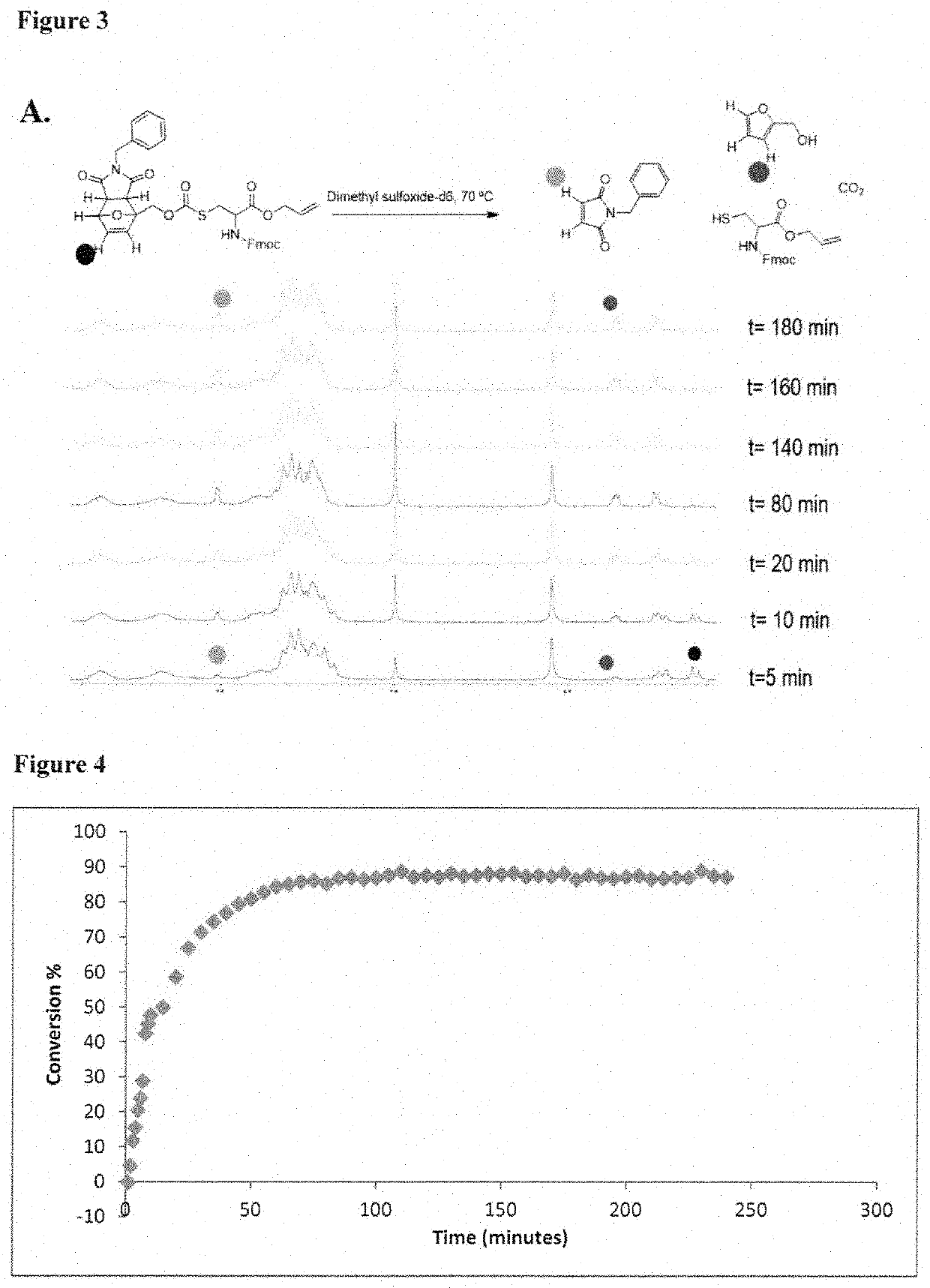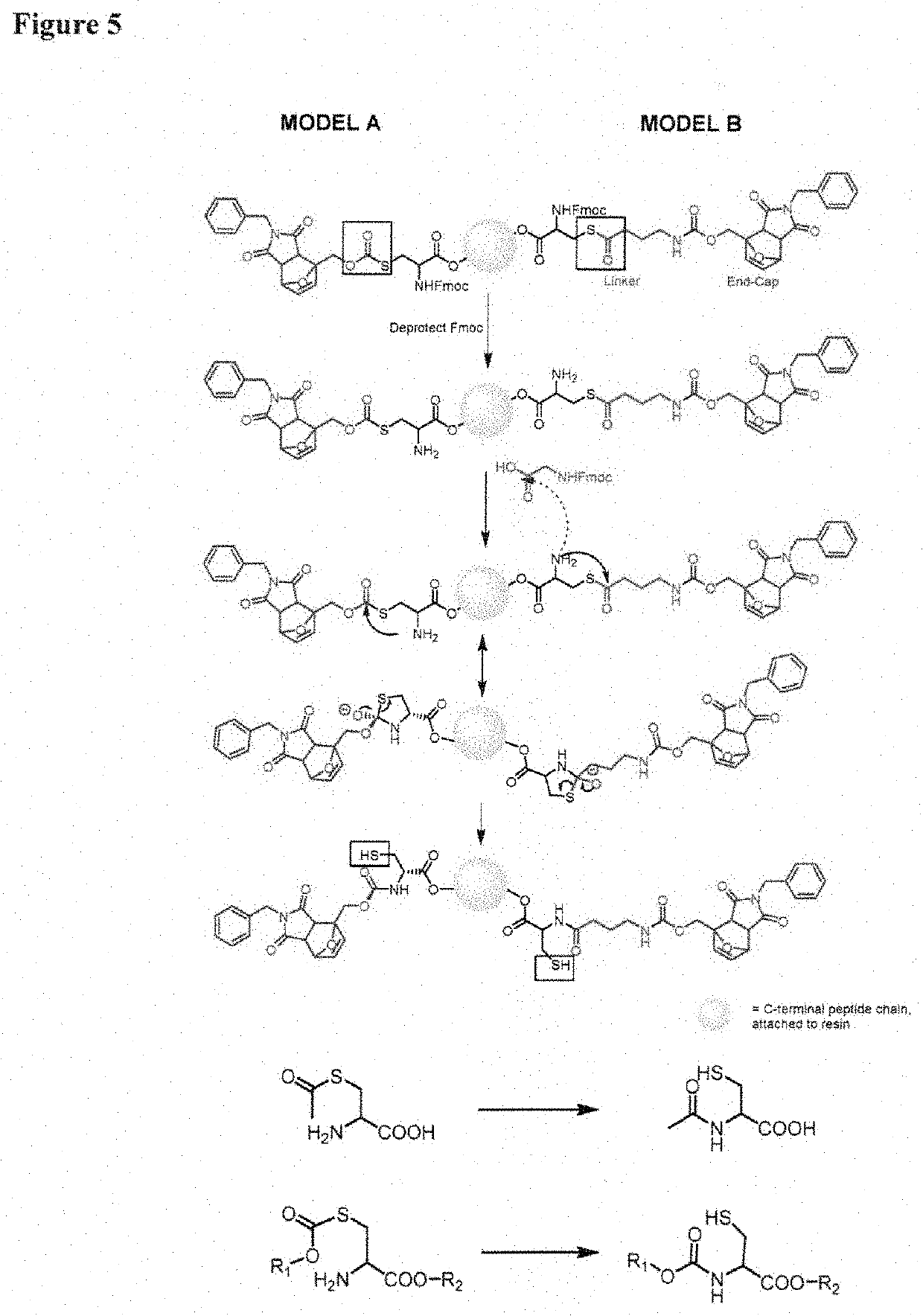Thermally Sensitive Protecting Groups for Cysteine for Peptide Cyclization and Selective Disulfide Bond Formation
- Summary
- Abstract
- Description
- Claims
- Application Information
AI Technical Summary
Benefits of technology
Problems solved by technology
Method used
Image
Examples
Embodiment Construction
[0087]In one aspect, the invention provides a set of cysteine building blocks for solid-phase peptide synthesis designed for the selective formation of disulfide bonds after synthesis. They can be incorporated into normal peptide synthesis using either Fmoc or Boc strategies (accounting for >99% of all syntheses) without necessarily requiring any need for modification or customization.
[0088]It has been recognized disulfide bonds may be essential for biological activity of peptides and proteins, and may assist organizing the three-dimensional shape. The peptide synthesis gives us the linear order of amino acids but does not in and of itself help us make the three-dimensional shapes. To make the three-dimensional shapes, you need to make the disulfide bonds after the peptide synthesis. This may require selectively deprotecting each pair of cysteines in turn, and thus requiring many different pairs of protecting group strategies if you have multiple disulfide bonds, as well as special ...
PUM
| Property | Measurement | Unit |
|---|---|---|
| Sensitivity | aaaaa | aaaaa |
Abstract
Description
Claims
Application Information
 Login to View More
Login to View More - R&D
- Intellectual Property
- Life Sciences
- Materials
- Tech Scout
- Unparalleled Data Quality
- Higher Quality Content
- 60% Fewer Hallucinations
Browse by: Latest US Patents, China's latest patents, Technical Efficacy Thesaurus, Application Domain, Technology Topic, Popular Technical Reports.
© 2025 PatSnap. All rights reserved.Legal|Privacy policy|Modern Slavery Act Transparency Statement|Sitemap|About US| Contact US: help@patsnap.com



